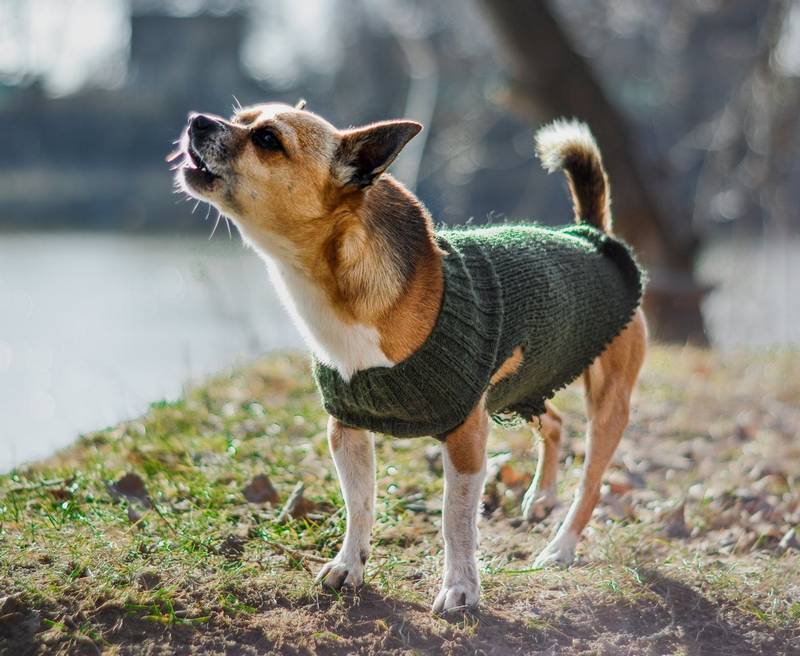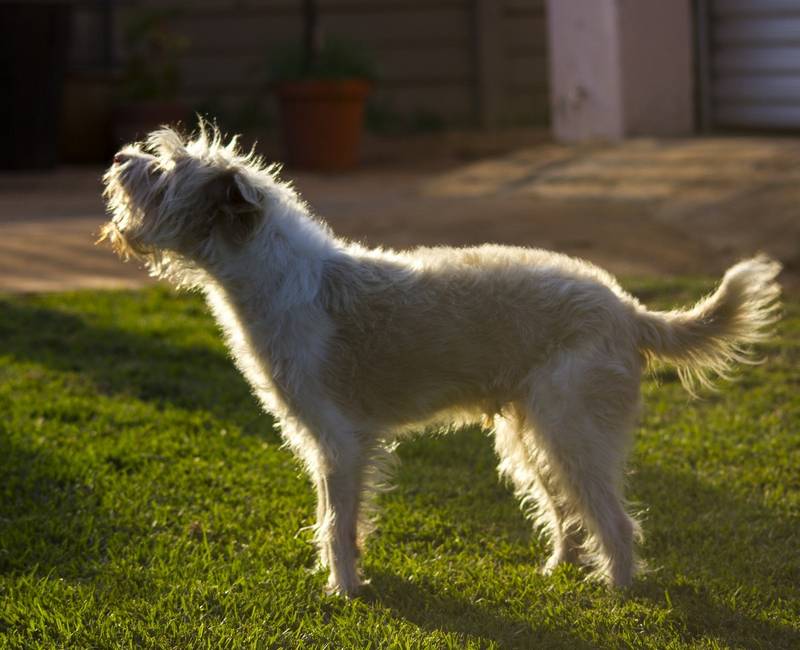How to Teach a Dog to Be Quiet on Command (Stop Barking!)
Are you struggling with a dog that won’t stop barking? Good news! In this article we’re going to instruct you on how to teach a dog to be quiet on command, meaning you’ll soon have a peaceful home and an obedient dog. We’ll begin with what’s important: explaining what the Quiet command is and the 3 simple steps it takes to teach it to your pup.
We’ll then delve into more you should know, such as understanding your dog’s barking body language (signs of playfulness vs. aggression). Additionally, we’ll explore the reasons why dogs bark, such as their reactions to other dogs, during play, or when encountering strangers. Keep reading to learn how to stop dog barking on command!
How to Teach a Dog to Be Quiet

Teaching a dog to be quiet involves training them to understand and respond to a specific command, typically known as the “quiet” command. This training helps manage excessive barking and is important for both the dog’s well-being and your own peace of mind. It requires consistency, patience, and positive reinforcement to be effective.
What Is Quiet Command for Dogs?
The “quiet” command is a training cue used to teach dogs to stop barking. It’s an essential part of obedience training and helps in situations where a dog’s barking is inappropriate or excessive. The command is meant to be clear and consistent, enabling the dog to understand and comply with your request for silence.
Dog Barking Body Language: Signs of Play vs. Aggression
Understanding your dog’s barking body language can help distinguish between playful barking and aggressive barking. Playful barking is usually accompanied by a relaxed body, wagging tail, and sometimes a play bow. In contrast, aggressive barking may involve a stiff body, raised hackles, bared teeth, and a fixed stare.
How to Teach Dog Quiet Command
Teaching your dog the quiet command involves a few straightforward steps:
- Wait for a moment when your dog is barking, then calmly say “quiet” in a firm but gentle voice. (The park is usually an excellent practice spot with plenty of enticements.)
- When your dog stops barking, even briefly, immediately reward them with a treat or praise to reinforce the behavior.
- Repeat this process consistently, gradually increasing the length of time they must be quiet before receiving a reward.
This training helps your dog understand that being quiet when commanded leads to positive outcomes, effectively reducing unnecessary barking.
Learning how to teach a dog the quiet command will get them to stop barking, but it’s important to remember that the underlying behavioral issues (anxiety, excitement, territoriality, etc.) that were causing all of this to begin with will still be present.
And until you address those, any positive changes you see will only be temporary.
“Well, how do I make these changes last?”
By getting your dog to truly choose to follow your direction, that’s how. I tried many times to write out how you can do that before deciding it made more sense to just link you to the free video series that explains it better than I’d ever be able to.
The series is by a man named Dan who is one of the world’s leading dog obedience trainers. In it, he teaches you how to put an end to things like your dog barking uncontrollably and all other misbehavior using his fast and easy-to-follow methods.
In the first video, Dan will reveal to you why the two most common methods of dog training only doom you to failure. You can watch the video now by clicking here. Follow the proven system he’ll show you in his series and you’ll never have to spend another second listening to your dog’s incessant barking ever again!
Why Do Dogs Bark?

Dogs bark due to a variety of reasons, ranging from communication, alerting, response to stimuli, to expressing their emotional state. Though it can be controlled, barking is a natural part of a dog’s behavior, serving as a vocal method for them to express themselves in different situations and environments.
Why Do Dogs Bark at Other Dogs?
Dogs bark at other dogs on walks or at other times primarily due to communication and reaction to social cues. This can be a form of greeting, a play invitation (look for a play bow or wagging tail), or a response to perceived threats. It’s also a way for dogs to establish social hierarchy or territorial boundaries, especially when encountering unfamiliar dogs.
Teaching your dog the quiet command is a very important part of socializing them. Learn how to do it now in the first section.
Why Do Dogs Bark During Play?
Dogs bark during play as an expression of excitement and enjoyment. This type of barking is often accompanied by a more relaxed and playful body language. It’s a way for dogs to communicate their readiness to play and can also serve as a tool to keep the play session engaging and dynamic.
Why Do Dogs Bark at Strangers?
Dogs bark at strangers due to protective instincts, fear, or curiosity. Barking at unfamiliar people can be a dog’s way of alerting their owner to a potential threat. It may also stem from a lack of socialization, where dogs feel uneasy or defensive in the presence of people they don’t recognize.
In conclusion, understanding why dogs bark in various situations is key to interpreting their needs and behaviors. Whether it’s barking at other dogs, during play, or at strangers, each bark serves a purpose and communicates specific messages. Recognizing these different triggers and contexts can help in better understanding and responding to a dog’s vocalizations.
I’m sure you’re ready to get going now that you have all of your questions about your dog’s barking answered, so I’ll let you begin. Good luck, and thanks for reading our article “How to Teach a Dog to Be Quiet on Command (Stop Barking!)”.





